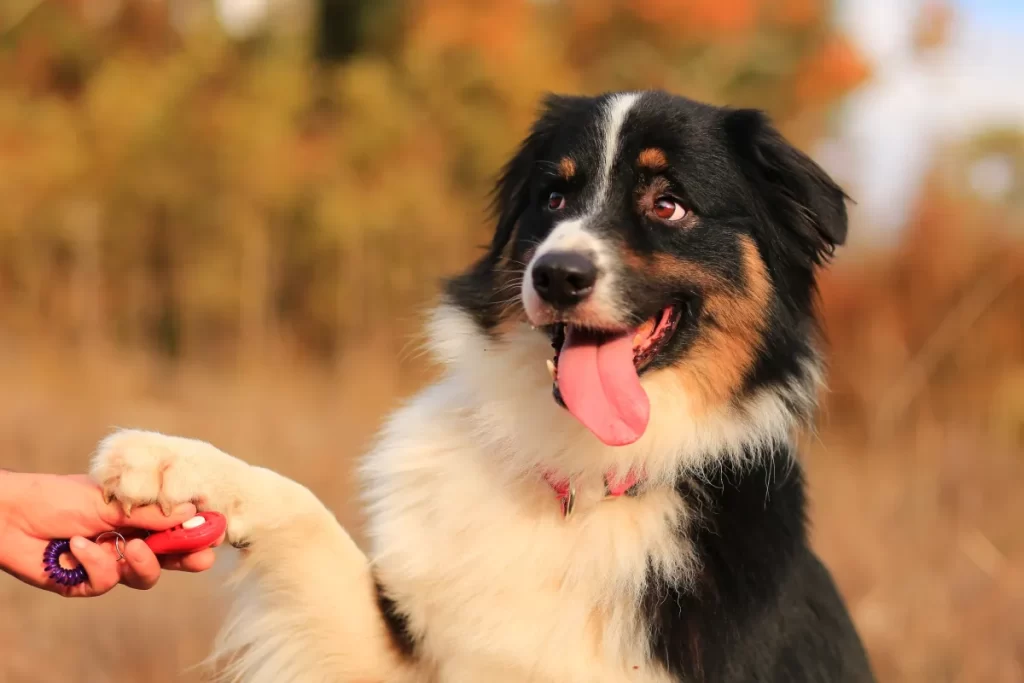When it comes to dog training, there are several dog training methods available that can help teach dogs different behaviors and skills. While basic dog training methods such as dog leash training and dog potty training are essential, advanced dog training techniques can help take your dog’s skills to the next level. In this blog post, we’ll explore several advanced dog training techniques and how to implement them effectively.
Positive Reinforcement Training
Positive reinforcement is a powerful dog training method that can help reinforce positive behaviors while discouraging negative ones. With this dog training technique, you’ll use treats or other rewards to encourage your dog to perform the desired behavior.
One of the benefits of positive reinforcement training is that it can help build a stronger bond between you and your dog. It can also help to prevent negative behaviors, such as chewing or biting before they start.
To implement positive reinforcement training, you’ll need to first identify the behavior you want to reinforce. Once you’ve done that, you can start rewarding your dog each time they exhibit the desired behavior. Make sure to use high-value treats or rewards, such as pieces of cooked chicken or cheese, to make the training more effective.
Clicker Training

Clicker training is another effective dog training strategy that relies on positive reinforcement. With this method, you’ll use a clicker to indicate to your dog that they have performed the desired behavior. The sound of the clicker serves as a marker, telling your dog that a reward is coming. Clicker training is often used to teach dogs complex behaviors or skills, such as agility training or tricks.
Before starting clicker training, it’s important to acclimate your dog to the sound of the clicker. Begin by clicking the clicker and immediately rewarding your dog with a treat. As your dog starts to associate the click with the reward, you can then start using it to reinforce specific behaviors.
Target Training
This is a highly effective dog training method that teaches your dog to touch a specific object, like your hand or a target stick. It’s commonly utilized in agility training and can aid in teaching basic skills.
Begin by choosing an object that will serve as your target, like a target stick, your hand, or any other touchable item. Then, place the target close to your dog’s nose and reward them each time they touch it with their nose. Through repeated practice, your dog will learn to associate the target with the reward and eventually touch the target on command.
Shaping
An advanced dog training technique that involves breaking down complex behaviors into smaller, achievable steps. You’ll reward your dog for each incremental progress they make towards the final behavior, gradually building up to the ultimate goal.
Shaping is advantageous because it can help teach dogs difficult skills or behaviors, like retrieving or opening doors. It can also reinforce fundamental obedience skills.
To begin with, shaping, identify the desired behavior that you want to teach your dog. Next, divide the behavior into manageable steps and reward your dog for each progress they make towards the final behavior. With patience and consistency, your dog will soon master the targeted behavior.
Capturing

Capturing rewards your dog for naturally occurring behaviors. It involves keeping rewards, like treats or praise, readily available so that you can quickly reward your dog when they perform the desired behavior.
This technique is helpful in reinforcing good behaviors that your dog is already exhibiting, such as sitting or lying down. It can also build your dog’s confidence and reinforce its positive behaviors.
To start with capturing, pay close attention to your dog and be ready to reward them when they display the desired behavior. For example, if your dog sits down on their own, you can immediately reward them with a treat or praise. Over time, your dog will learn to associate the behavior with the reward, increasing the likelihood of them performing it in the future.
Chaining
Chaining is linking a series of behaviors to form a sequence. Before linking the behaviors together, you’ll need to teach your dog each behavior individually. It is typically used in agility training and can also be beneficial for reinforcing basic controlling skills.
To implement chaining, you’ll need to first identify the behaviors you want to link together. Once you’ve done that, you can start teaching your dog each behavior separately. Once your dog has learned each behavior, you can start linking them together to form a sequence.
Advanced dog training techniques can help take your dog’s skills to the next level and build a stronger bond between you and your dog. By implementing these, you can help teach your dog complex behaviors and reinforce their positive behaviors. With patience, consistency, and plenty of rewards, you can create a successful dog training program that will benefit both you and your furry friend.